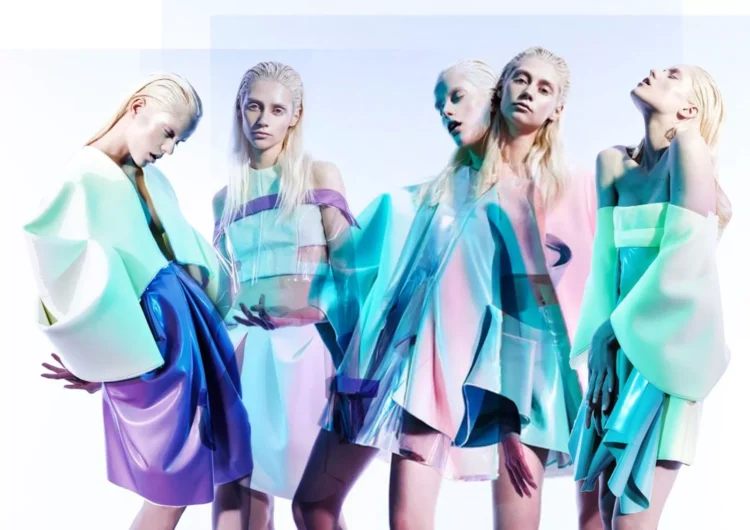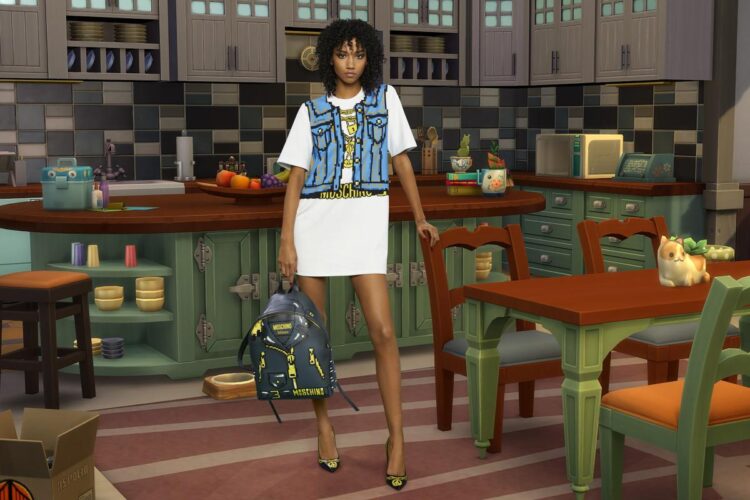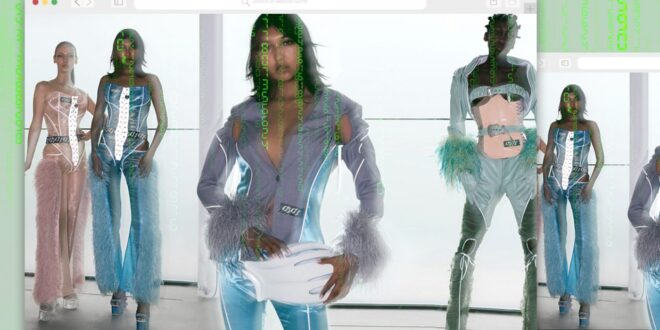The digital fashion industry has progressed from feasible to inevitable in the last few years. Switching from a physical to a digital mindset has never been more prevalent in 2024 for both brands and consumers.
Are Digital Clothes Just Another NFT?

Recently, digital fashion has been addressed in conjunction with the metaverse; a sci-fi notion turned pervasive phrase that has been hailed as the internet’s future.
For example, in Mark Zuckerberg’s metaverse, we’ll all have miniature doppelgängers wandering about the digital environment. Virtual avatars will have virtual jobs, virtual social commitments, and virtual wardrobes.
To this goal, Silicon Valley has been attempting to persuade Americans to consider, and invest real money in, things that appear to be more or less false.
Digital fashion appears to be quite simple to comprehend compared to something as volatile as non-fungible tokens.
Will Digital fashion take over physical fashion?

Virtual fashion, on the other hand, isn’t only for avatars. It’s a burgeoning fashion subculture that involves digitally designing and modeling real-world clothing, and uploading real-world and digital clothing designs to the blockchain so that these files may be auctioned as NFTs, and perhaps digital clothing rendered on actual humans.
There’s a theory that digital fashion will eventually supplant people’s need for genuine, physical clothing. According to this theory, outfit duplication will become obsolete since digital-only garments exist exclusively for sartorial display and self outside of the restrictions of physical reality.
On the other hand, this viewpoint appears to be shared mostly by people and businesses who expect to profit handsomely from the growing popularity of digital fashion. Fashion has long made a living out of selling dreams.
However, is this one merely another diversion from the larger fashion industry’s pressing issues? Digital fashion proponents argue that it can be lucrative, practical, artistically rich, and long-lasting. Much of this is still debatable. After all, we’re still encased in our flesh suits.
How Digital Fashion and Veganism Intersect

Digital fashion, according to some claims, does not lead to the abuse of natural resources, cruelty to animals, waste creation, or the expansion of sweatshops.
In comparison, one outfit needs 10,000 liters of water to produce, and 11.8 billion kilograms of clothing and textiles end up in landfills in the United States each year. Annually, 85 million trees are used to create cloth, yet sweatshop employees’ wages account for only 20% of their total income.
Hundreds of millions of animals are killed each year to feed the fashion sector, and millions more are exploited for experimentation. Digital decisions within the metaverse—from runaway programs to meetings—could undoubtedly result in more regard for animal rights.
Because fashion evokes emotions and encourages ostentation, it promotes the spread of unsustainable mindsets centered on the urge to accumulate more possessions.
That becomes much more preoccupying in a post-pandemic environment, when revenge purchase acts, such as those recently observed in the post-lockdown United Kingdom, can become prevalent.
Enhancing sustainability requires an ethical change that shakes fashion to its core and ensures fairness for all living creatures.
Thankfully, continuing movements are attempting to do so. The slow fashion movement is a well-known example, which also tries to dispel the stereotype of environmentalists as hateful individuals. Slow fashion ambassadors advocate for mindful manufacturing and consumption systems based on love-centered approaches.
Embodied and bio approaches to design likewise attempt to eliminate fashion’s ego by combining ethics with aesthetics. Unsustainable, aesthetics-focused processes begin by imagining a visual experience, then selecting materials and bodies that match the form.
From replacing animal-derived materials with vegan leather and upcycling waste through recycled plastic bottles, digital-only clothing is just another way for the fashion industry to advocate for awareness of the environmental impact of clothing production.
Top Fashion Brands Leading the Digital Sphere

Carlings
Carlings, the Norwegian design company, is undoubtedly the most sophisticated fashion brand for virtual fashion. Carlings produced an all-virtual collection named “Neo X” in November 2018, while virtual fashion was still in its infancy. The ensemble, which included a brilliant yellow crocodile skin coat, blue latex chaps covered with computer code print, and a black helmet printed with the words ‘Eat The Glitch,’ was otherworldly and earned a lot of positive feedback from fashion lovers.
The Fabricant
The Fabricant, founded by Kerry Murphy and Amber Jae Slooten in 2018, is another crucial leader in the virtual fashion world. In May 2019, the firm gained notoriety after selling its Iridescent garment for $9500. The company has now gone from strength to strength, collaborating with industry heavyweights like Tommy Hilfiger and Soorty.
The Fabricant now offers a free monthly drop of fashion products to inspire users to experiment with virtual fashion on their own. Fabricant created Leela, a digital forum and playground where individuals may experiment with numerous virtual garments.
Moschino
Moschino was one of the first well-known fashion houses to join the virtual fashion party. Last year, it created a capsule series inspired by The Sims, a hugely popular online game.
With an in-game debut in The Sims 4, The Sims Mobile, and The Sims FreePlay, the Moschino x The Sims Capsule Series is making its way into the digital reality world of The Sims. The price varied from $85 for a phone case to $1,295 for a bag.
Moschino also introduced its first virtual garments to go along with the collection. These featured the Freezer Bunnies from the capsule collection, and players may dress or style their avatars in Moschino clothing and designs with this collection.

Tribute Brand
Tribute, a Croatian business specializing in virtual garments, is the newest brand on the digital marketplace. This fashion brand, situated in Zagreb, Croatia, was established by Gala Marija Vrbanic alongside Filip Vajda and has refined the skill of manufacturing ‘contactless cyber fashion’ garments. Its designs are based on the video games Tekken and Grand Theft Auto, ranging in price from $29 to $699.
Hanifa
Anifa Mvuemba launched the Congolese fashion company Hanifa. The brand’s Pink Label Collection, which showcased photorealistic 3D representations of the clothing strolling (or floating) down the runway without using human models, made waves on the internet. Imagine wonderfully draped garments on models walking the runway, but with no models and only flawlessly draped outfits.
Digital Fashion Much More Sustainable – But is it Useful?
This, of course, isn’t the best answer for everybody. As previously said, digital fashion is expensive, but it can only be “worn” online — it doesn’t exist physically; thus, it can’t be worn outdoors for obvious reasons. If this appeals to your need for novelty and social media sharing, XR Couture is one of the digital fashion platforms that is leaving no stone uncovered in its efforts to make the digital fashion revolution a success.
Nonetheless, if you still want some digital drip and are not quite sure how to afford some then look no further than our low-deposit casinos, with secure and efficient casino payment methods you’re sure to get your money hassle-free.
As activists for sustainable fashion, we hope that more industry actors and consumers will begin to interact with this innovative tech-enabled solution in the coming years.
 Hi Boox Popular Magazine 2024
Hi Boox Popular Magazine 2024



